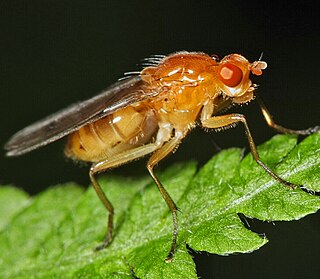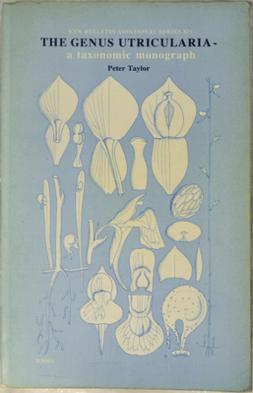
A raven is any of several larger-bodied passerine bird species in the genus Corvus. These species do not form a single taxonomic group within the genus. There is no consistent distinction between crows and ravens; the two names are assigned to different species chiefly based on their size.

Carcharhiniformes, the ground sharks, are the largest order of sharks, with over 270 species. They include a number of common types, such as catsharks, swellsharks, and requiem sharks.

The Iguanidae is a family of lizards composed of the iguanas, chuckwallas, and their prehistoric relatives, including the widespread green iguana.

A raceme or racemoid is an unbranched, indeterminate type of inflorescence bearing flowers having short floral stalks along the shoots that bear the flowers. The oldest flowers grow close to the base and new flowers are produced as the shoot grows in height, with no predetermined growth limit. Examples of racemes occur on mustard, radish, and orchid plants.

The Drosophilidae are a diverse, cosmopolitan family of flies, which includes species called fruit flies, although they are more accurately referred to as vinegar or pomace flies. Another distantly related family of flies, Tephritidae, are true fruit flies because they are frugivorous, and include apple maggot flies and many pests. The best known species of the Drosophilidae is Drosophila melanogaster, within the genus Drosophila, also called the "fruit fly." Drosophila melanogaster is used extensively for studies concerning genetics, development, physiology, ecology and behaviour. Many fundamental biological mechanisms were discovered first in D. melanogaster. The fruit fly is mostly composed of post-mitotic cells, has a very short lifespan, and shows gradual aging. As in other species, temperature influences the life history of the animal. Several genes have been identified that can be manipulated to extend the lifespan of these insects. Additionally, Drosophila subobscura, also within the genus Drosophila, has been reputed as a model organism for evolutionary-biological studies, along with D. sechellia for the evolution of host specialization on the toxic noni fruit and Scaptomyza flava for the evolution of herbivory and specialist on toxic mustard leaves.
Kitō-ryū (起倒流) is a traditional school (koryū) of the Japanese martial art of jujutsu. Its syllabus comprises atemi-waza, nage-waza, kansetsu-waza and shime-waza. The style is focused on throws and sweeps, and many of these techniques are designed to be performed while in full armor.

Pipunculidae is a family of flies (Diptera) commonly termed big-headed flies, a reference to the large (holoptic) eyes, which cover nearly the entire head. The family is found worldwide and more than 1300 species have been described.

Koshiki no Kata is a kata in Judo. It is also known as Kito-ryu no Kata (起倒流の形). It consists of 21 techniques originally belonging to the Takenaka-ha Kito School of jujutsu. Jigoro Kano revised the techniques and incorporated them into a kata in order to preserve the historical source of judo. The set of forms is antique and were intended for "Kumiuchi", the grappling of armored warriors in the feudal ages. As such, the kata is to be performed with both partners imagining that they are clad in armor. The Koshiki-no-kata, together with Nage-no-kata, Katame-no-kata, Ju-no-kata, Kime-no-kata and Goshin-Jitsu, is recognised by the International Judo Federation (IJF.) Although koshiki-no-kata is not often seen in the United States, it is still taught and practiced in Japan. Some striking demonstrations of it from the 1950s can be seen in the film "Classic Judo Kata," by Harold Sharp. If the description of the kata in that film is correct, it would be the only judo kata that involves attacking the cervical spine.

The Dryomyzidae are a small family of flies ranging from 4–18 mm long, with prominent bristles, and yellow to brown or rust-yellow coloring. The wings are very large. The subcosta is complete and well separated from vein 1. Larvae feed on decaying organic matter - carrion, dung, and fungi. The prelambrum protrudes from the oral cavity. Vibrissae are absent and the postvertical bristles are divergent.

Pangasius is a genus of medium-large to very large shark catfishes native to fresh water in South and Southeast Asia. The term "pangasius" is sometimes used to specifically refer to the commercially important basa fish, P. bocourti.

Neotragus is a genus of dwarf antelope, native to Africa. The genus includes only a single species without any dispute, namely Neotragus pygmaeus. This species, the royal antelope, is the smallest antelope in the world, usually weighing around 5 to 7 pounds. They live in conditions that are warm and moist and are found in the tropical forests of Western Africa. The royal antelope's diet consists of high-nutrient food sources, such as leaves, flowers, plants, fruits, and the growing tips of shoots. Recent nucleic acid studies now suggest that the other two species formerly included in the genus are not closely related, and should be assigned to the genus Nesotragus. Members of the Nesotragus genus are the only surviving members of the subfamily Nesotraginae or tribe Nesotragini and are more closely related to the impala, while the royal antelope is still considered a member of the subfamily Antilopinae or tribe Antilopini.

Gonyaulax is a genus of dinoflagellates with the type species Gonyaulax spinifera Diesing. Gonyaulax belongs to red dinoflagellates and commonly causes red tides. It can produce yesotoxins: for example, strains of Gonyaulax spinifera from New Zealand are yessotoxin producers.
Anomalochelys is an extinct genus of land turtle from the Upper Cretaceous of Hokkaido, Japan, Guangdong, China.

Euphronia is a genus of three species of shrubs native to northern South America and is the only genus in the family Euphroniaceae. It was previously classified in the Vochysiaceae family and elsewhere due to its unique floral features, but the APG III system of 2009 recognized Euphroniaceae as distinct and placed Euphronia in it. Based on molecular data from the rbcL gene, it is sister to the Chrysobalanaceae.

The Genus Utricularia: A Taxonomic Monograph is a monograph by Peter Taylor on the carnivorous plant genus Utricularia, the bladderworts. It was published in 1989 by Her Majesty's Stationery Office (HMSO) as the fourteenth entry in the Kew Bulletin Additional Series. It was reprinted for The Royal Botanic Gardens, Kew in 1994.
Masaki Kito is a Japanese attorney at law who specializes in consumer affairs, investment frauds and cases involving religious cults, especially Aleph and the Unification Church. He regularly appears as a commentator on Japanese TV news and current affairs programs.
Maaike Kito Lebbing, known professionally as Kito, is an Australian record producer, songwriter and DJ currently based in Los Angeles, California. Between 2011 and 2014, she was a member of the duo Kito & Reija Lee, and in 2012 collaborated with Feadz on Electric Empire. She has released an EP in 2018 called Haani and a number of singles, and has remixed songs for others as well as producing songs. In 2019 she was nominated for the Breakthrough Songwriter of the Year at the 2020 Global APRA Music Awards.
Astomonema is a genus of nematode worms in the family Siphonolaimidae. They lack a mouth or conventional digestive tract, but contain symbiotic sulfur-oxidizing bacteria that serve as their primary food source. They live in the marine interstitial habitat.
Siphonolaimidae is a family of nematodes belonging to the order Monhysterida.
Neochromadora is a genus of nematodes belonging to the family Chromadoridae.












